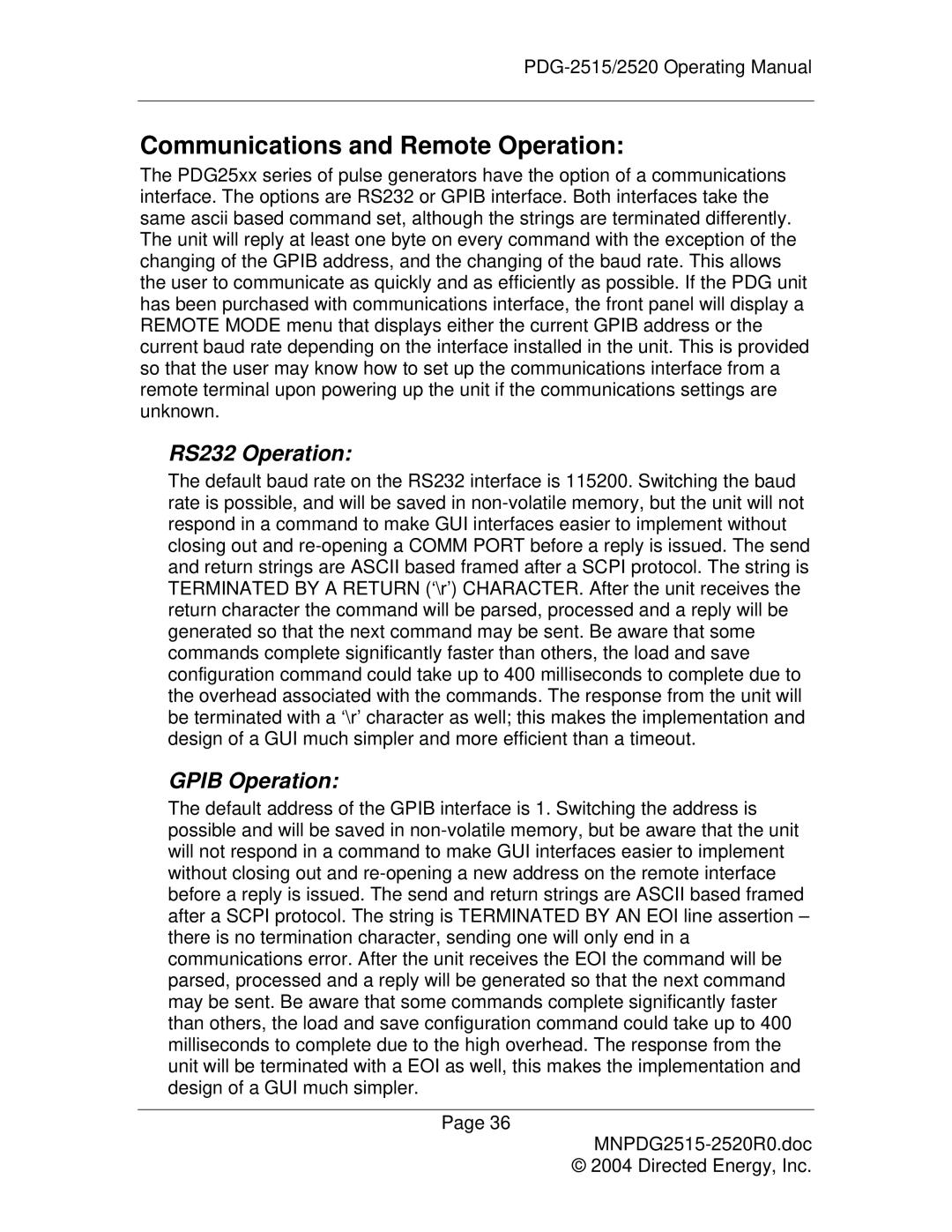PDG-2515/2520 Operating Manual
Communications and Remote Operation:
The PDG25xx series of pulse generators have the option of a communications interface. The options are RS232 or GPIB interface. Both interfaces take the same ascii based command set, although the strings are terminated differently. The unit will reply at least one byte on every command with the exception of the changing of the GPIB address, and the changing of the baud rate. This allows the user to communicate as quickly and as efficiently as possible. If the PDG unit has been purchased with communications interface, the front panel will display a REMOTE MODE menu that displays either the current GPIB address or the current baud rate depending on the interface installed in the unit. This is provided so that the user may know how to set up the communications interface from a remote terminal upon powering up the unit if the communications settings are unknown.
RS232 Operation:
The default baud rate on the RS232 interface is 115200. Switching the baud rate is possible, and will be saved in non-volatile memory, but the unit will not respond in a command to make GUI interfaces easier to implement without closing out and re-opening a COMM PORT before a reply is issued. The send and return strings are ASCII based framed after a SCPI protocol. The string is TERMINATED BY A RETURN (‘\r’) CHARACTER. After the unit receives the return character the command will be parsed, processed and a reply will be generated so that the next command may be sent. Be aware that some commands complete significantly faster than others, the load and save configuration command could take up to 400 milliseconds to complete due to the overhead associated with the commands. The response from the unit will be terminated with a ‘\r’ character as well; this makes the implementation and design of a GUI much simpler and more efficient than a timeout.
GPIB Operation:
The default address of the GPIB interface is 1. Switching the address is possible and will be saved in non-volatile memory, but be aware that the unit will not respond in a command to make GUI interfaces easier to implement without closing out and re-opening a new address on the remote interface before a reply is issued. The send and return strings are ASCII based framed after a SCPI protocol. The string is TERMINATED BY AN EOI line assertion – there is no termination character, sending one will only end in a communications error. After the unit receives the EOI the command will be parsed, processed and a reply will be generated so that the next command may be sent. Be aware that some commands complete significantly faster than others, the load and save configuration command could take up to 400 milliseconds to complete due to the high overhead. The response from the unit will be terminated with a EOI as well, this makes the implementation and design of a GUI much simpler.
Page 36
MNPDG2515-2520R0.doc
© 2004 Directed Energy, Inc.

